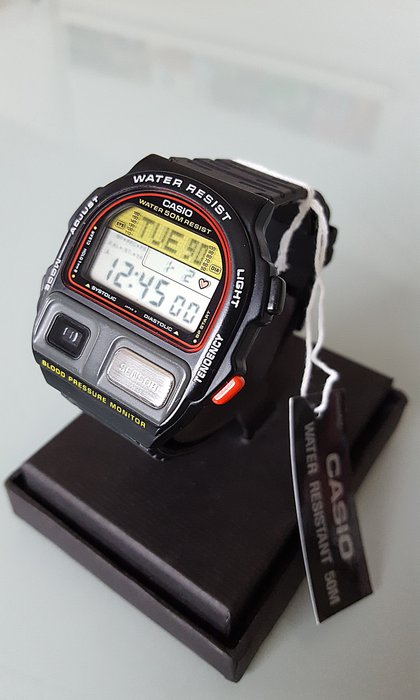Casio Bp 100 User Manual

List of Vintage, Classic, Retro, Antique, Old Casio Watches User Manuals. Russkie strip shashki 31 klyuch. Casio Watch Module Number: Casio Watches Models - Download free manuals for Vintage Casio watches, free catalouges, instruction manuals. Casio BP-100 Manual, for Casio Blood pressure Watch: CFX-400/40 manual.
• Thursday, May 28th, 2009 - 3:39 pm • Casio BP-100 [900] Blood Pressure Monitor watch • LOOKING FOR THE MANUAL?! Today's feature is Casio's BP-100 blood pressure monitor watch. After the success of the JP-100W pulsecheck, Casio put that concept on steroids and released this model in 1993. (Or was it 1992?) It claims to measure not only the heart rate, but also the blood pressure! * (Just a note, Casio's sequel to the JP-100W was the JP-200W, which was released in 1992. The BP-100 is not a direct descendant of the JP series watches, but certainly builds on that technology.) Unlike other Casio watches of its time, this model came in a custom designed box.
Not only that, it was sold in different custom package versions. I have seen a long slender cardboard box version as well as the version shown here. Removing the plastic shrink wrap and outer sleeve reveals a plastic case.
Opening that case reveals the watch seated on a red velvet-like tray. In that tray, you will find an instructional audio cassette tape. Since I got this watch in 2008, I didn't have a cassette tape player to listen to the tape. I wonder what it sounds like! And if you lift that tray, you will find not one, but TWO manuals. The blue manual is the abbreviated version that briefly covers the blood pressure functions, whereas the black one covers the entire watch in detail. The special packaging and redundant instructional material leads me to believe that Casio intended this watch to be used by people unfamiliar with technology.
I'm not sure how successful Casio was in their marketing strategy, but it's interesting to note. Enough about packaging, get on to the watch already! Gazovij kotel roca otzivi. Okay okay, relax!:) As a watch, the functions are pretty standard. It's got a built-in microlight, along with alarm, stopwatch and timer modes.

But what makes this watch special is the blood pressure functions. The watch actually uses a combination of two sensor technologies.
The pad on the left reads the pulse using a photosensor, exactly like the. The BP-100 manual includes a schematic of this photosensor technology.
The pad on the right is one lead of a two-lead ECG probe that's built into the watch. Can you guess where the other lead is? It's on the watch backplate. Those leads measure the electrical signal that accompanies your heart beat. For the system to work properly, the watch's backplate must make contact with your bare wrist.
In addition, your right hand can only touch the two sensors--because if you rested your right thumb on your left wrist (or vice versa) while making this measurement, you'd create an alternate conduction path. But how does Casio use these sensors to measure blood pressure?
Well, it does not. The watch obviously doesn't have a built-in cuff or air pump that can measure the real absolute blood pressure. Instead, it relies on a concept called 'Pulse Wave Transit Time,' or PWTT. I found this excellent website that describes the science in detail, so I'll leave interested readers to follow up on this link. To take advantage of the PWTT concept, it just so happens that you need to take the measurements at your extremities. Lucky for Casio, a wristwatch is the perfect candidate for this application! PWTT, by itself, can only tell you the relative changes in blood pressure, not an absolute number.
Therefore, you have to input some basic data into the watch before using any of its blood pressure features. After you input your normal resting blood pressure, you're good to go. You can also input your post-exercise BP to use the more advanced functions. When all that's done, just press the button and relax.
Taking a BP measurement with the watch's sensors requires very steady fingers/hands, and it can be an aggravating experience if you cannot hold still. But once you do it right, you will be greeted with this screen. Note that it also measures your heart rate.
The watch can store upto 30 BP measurements, which is automatically timestamped. You can even view your past measurements in graph form. Note that I only have 3 datapoints stored in the below graph. If you had all 30 datapoints stored, it would show a nice filled graph. One last thing, the back plate on the BP-100 breaks two Casio conventions. It does not show the module number. It has a serial number, which is very unusual for a 90's model with resin case.